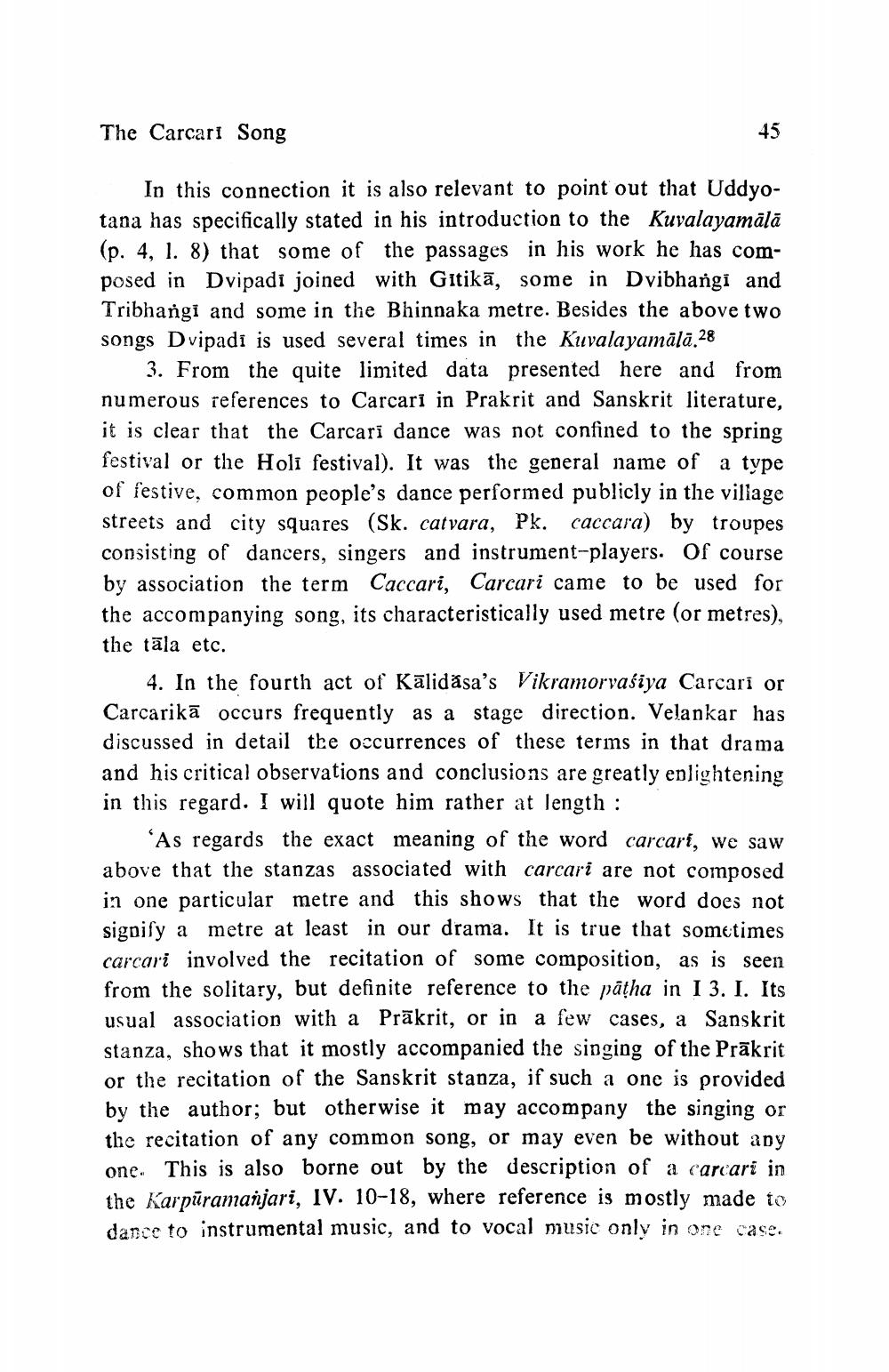________________
The Carcari Song
45
In this connection it is also relevant to point out that Uddyotana has specifically stated in his introduction to the Kuvalayamālā (p. 4, 1. 8) that some of the passages in his work he has composed in Dvipadi joined with Gitikā, some in Dvibhangi and Tribhangi and some in the Bhinnaka metre. Besides the above two songs Dvipadi is used several times in the Kuvalayamālā.28
3. From the quite limited data presented here and from numerous references to Carcari in Prakrit and Sanskrit literature, it is clear that the Carcari dance was not confined to the spring festival or the Holi festival). It was the general name of a type of festive, common people's dance performed publicly in the village streets and city squares (Sk. catvara, Pk. caccara) by troupes consisting of dancers, singers and instrument-players. Of course by association the term Caccari, Carcari came to be used for the accompanying song, its characteristically used metre (or metres), the tāla etc.
4. In the fourth act of Kālidása's Vikramorvasiya Carcari or Carcarikā occurs frequently as a stage direction. Velankar has discussed in detail the occurrences of these terms in that drama and his critical observations and conclusions are greatly enlightening in this regard. I will quote him rather at length :
“As regards the exact meaning of the word carcari, we saw above that the stanzas associated with carcari are not composed in one particular metre and this shows that the word does not sigpisy a metre at least in our drama. It is true that sometimes carcari involved the recitation of some composition, as is seen from the solitary, but definite reference to the pātha in I 3. I. Its usual association with a Prākrit, or in a few cases, a Sanskrit stanza, shows that it mostly accompanied the singing of the Prākrit or the recitation of the Sanskrit stanza, if such a one is provided by the author; but otherwise it may accompany the singing or the recitation of any common song, or may even be without any one. This is also borne out by the description of a carcari in the Karpūramanjari, IV. 10-18, where reference is mostly made to dance to instrumental music, and to vocal music only in one case.




